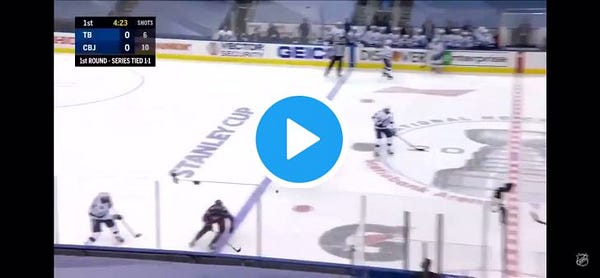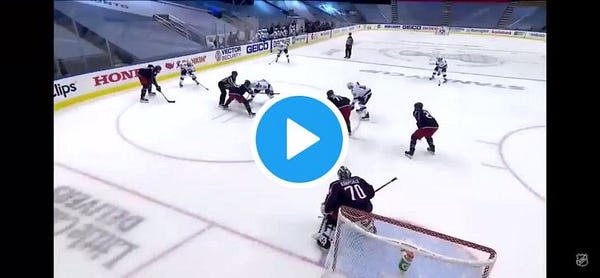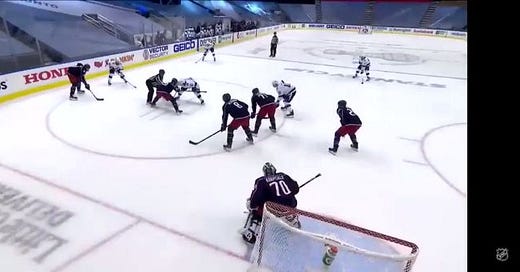What Do Tired Legs and Tired Minds Look Like?
How to spot when players have played too much hockey
It’s playoff time. It’s an exciting time of the year for hockey fans. It’s also a grueling and taxing experience for the players.
What happens when players are overused and tired? Let’s take a look at a game from the 2020 Stanley Cup Playoffs from the Columbus vs Tampa series.
The 2020 Blue Jackets
The Columbus Blue Jackets had just come off a season where many of their best players decided to move on - Matt Duchene, Sergei Bobrovsky, Artemi Panarin, and Ryan Dzingel.
Just like the expansion Vegas Golden Knights, there was a motivated group with something to prove.
In the COVID-shortened season, the Blue Jackets got into the qualifying round and faced the Toronto Maple Leafs in what turned out to be a slugfest.
August (YouTube highlights linked)
2nd = Win 2-0
4th = Loss 0-3
6th = Win 4-3 OT
7th = Loss 3-4 OT
9th = Win 3-0
Instead of a break, they headed directly into the next round with a game on August 11 that resulted in a 2-3 loss in 5 overtimes, almost three full games worth of play!
A few days later, the gusty Blue Jackets found a way to win on the 13th with a 3-1 result. The following game had all the telling signs of a tired team that had battled hard and left everything on the ice.
The Telling Loss
Goal #1 - Going straight-legged


While the attempt at a skilled play can be chalked up to a youthful rookie error, there are telling signs with the backcheck. Foudy starts with crossovers to get back and quickly succumbs. His power is weaker than normal and eventually ends up with poor knee flexión - commonly referred to “going straight-legged,” where a player’s bend is less their ankles and knees and mostly in their hip.
This happens at the end of long shifts and a key reason why short shifts are a competitive advantage.
Goal #2 - Puck Watching


Watch the center, Wennberg’s head. He loses focus on his assignment as he watches the play happening - commonly known as “puck watching.” At the lower levels, this is extremely common. Sometimes it’s just laziness and unfocused play. In this case, it’s likely due to a tired mind trying to interpret the most efficient next movement and then react in order to save energy.
Goal #3 - Lack of Awareness


The mind and body are tricky to players sometimes. It’s constantly trying to find shortcuts and players are in a constant battle to overcome them. As players get tired, habits break down. One of those habits that often breaks down first is awareness. Players simply don’t look around as often.
In the above video, Nick Foligno has about a 10-foot head start on the backcheck on Victor Hedman. Foligno stops skating, is straight-legged, and simply has his stick in front as a token deterrent. If he had looked around to gain awareness, he would’ve seen Hedman and taken the extra step or two in order to block the scoring chance.
Pierre Luc-Dubois didn’t help much easier by transitioning with a large loop rather than a tight loop or stop/start.
Telling Signs
Some telling signs of fatigue are when these things happen more frequently:
Getting straight-legged; especially early in shifts.
Puck watching.
Big transition loops over tight turns or stop/starts
Lack of awareness
Throwing the puck away instead of making hockey decisions.
When players get tired, you can see telling signs like these. In the NHL playoffs, it’s tough to give players time to rest and recover. In youth hockey or during the season, it’s a great practice to notice where players are at and give them rest.
Further Reading
Did you enjoy this newsletter?
Help us spread the ideas within and share it with the people you care about



